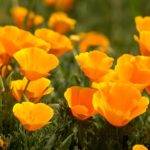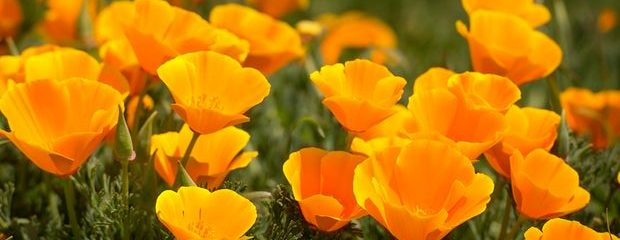 The loss of flower-rich habitat since the 1930s has taken its toll on our pollinators, but thoughtful planting of a plot even the area of the page that you are reading can make a world of difference to a bee. That may seem a drop in the ocean, but every centimetre planted with the right flowers counts. According to Richard Glassborow of the London Beekeepers’ Association, “Window boxes, planters and pots can collectively contribute to a flower-rich environment.”
The loss of flower-rich habitat since the 1930s has taken its toll on our pollinators, but thoughtful planting of a plot even the area of the page that you are reading can make a world of difference to a bee. That may seem a drop in the ocean, but every centimetre planted with the right flowers counts. According to Richard Glassborow of the London Beekeepers’ Association, “Window boxes, planters and pots can collectively contribute to a flower-rich environment.”
Small plants have a massive part to play in this, even in the most inhospitable environment. Pretty little Mexican fleabane (Erigeron karvinskianus) will happily seed into walls and steps; creeping thyme (Thymus serpyllum) transforms gravel into an oasis for bees and butterflies; and the spotted deadnettle (Lamium maculatum ‘White Nancy’) can brighten even the darkest corner.
Furthermore, small plants in containers are portable, making them an excellent choice for those of us who live in rented accommodation. Containers of pocket-sized pollinator-magnets brighten doorsteps and concrete plots, and offer tenants the chance to experience the sense of wellbeing associated with gardening. At the end of a tenancy, planters can be moved to a new property to become the neighbourhood’s latest must-visit pollinator cafe.
When selecting plants for butterflies, bees and hoverflies, avoid double flowers and cultivars with little or no pollen or nectar. If in doubt, look out for the RHS Perfect For Pollinators logo. Here’s my selection of the best small plants for pots. They may be Lilliputian in stature, but their value is immense.
Sunny
A balcony on a busy road may not seem the most promising location for flowers, but consider white thrift (Armeria maritima ‘Alba’), which is only 15cm tall. Delicate pompoms of pure, white flowers held atop grassy foliage belie the true nature of this tough little perennial: its cliff-dwelling ancestry makes thrift a superb plant for sunny, urban sites and window boxes.
Diminutive relatives of larger pollinator-magnets are a boon for gardeners with little outdoor space. The catmint Nepeta nervosa ‘Blue Moon’ is 30cm high and 20cm wide, while Echium vulgare ‘Blue Bedder’ is a compact viper’s bugloss that can be grown from seed scattered in a container. Either can be teamed with dainty, pale yellow scabious (Scabiosa columbaria subsp. ochroleuca) and the cascading, fragrant flowers of sweet alyssum (Lobularia maritima ‘Snowdrift’) for a light, summery mix.
For a taller, more sumptuous scheme, combine the stately purple spires of Salvia nemorosa ‘Caradonna’ with the trailing stems of ornamental oregano, Origanum ‘Kent Beauty’. Hardy annuals can also be sown directly into a container. Try California poppy (Eschscholzia californica) and poached egg plant (Limnanthes douglasii) for a bright and beautiful, pollinator-friendly display. For a slightly larger space, sow honeywort (Cerinthe major), allow it to seed around, and you’ll be rewared by years of flowers for the cost of a packet of seeds.
Come autumn, plant bulbs and corms that flower in late winter: they are inexpensive and portable, yet these plants, barely 15cm high, can be lifesavers for bees in February. Make them a feature in shallow bulb pans or add to containers of perennials. Early crocus (Crocus tommasinianus), early bulbous Iris (Iris reticulata), and Misczenko squill (Scilla mischtschenkoana) bloom in sun or light shade.
After flowering, allow leaves to die down naturally. Perennials will help mask fading foliage – hardy geraniums are especially adept at this. Striped bloody cranesbill (Geranium sanguineum var. striatum), at 15cm tall, is perfect for pots.
Shady
Shade from buildings and trees need not be a barrier to planting a container of elegant blooms for bees. Helleborus x hybridus ‘White Lady’ mingling with white common bleeding heart (Dicentra formosa f. alba) and the violet-blue flowers of Pulmonaria ‘Diana Clare’ will brighten a shady corner, while providing a bee feast from winter until May, after which contrasting foliage will add interest.
Edibles
A potted potager can provide flowers for pollinators and food for our plates, too. Try pink-flowered dwarf runner bean ‘Millionaire’, or shrubby herbs such as oregano and thyme. Harvest herb leaves as required, but allow the plants to flower for pollinators.
For a productive container overflowing with nectar-rich flowers, combine edibles with ornamentals. Chives (Allium schoenoprasum) are useful in the kitchen, and their purple-pink blooms are attractive to butterflies and bees. Plant them with pollinator-magnet aubrieta, or nestle chives in with oregano, marjoram or thyme for a portable herb garden.
Lavender (Lavandula angustifolia) ‘Little Lady’ is a favourite with bees and butterflies. Underplant with thyme (Thymus serpyllum ‘Snowdrift’) for a cool combination.
The leaves of the edible herb rock hyssop (Hyssopus officinalis subsp. aristatus) cope well with pollution, making it an excellent addition to urban containers. Its deep blue flowers and dark green foliage associate well with the cream and green foliage and pale flowers of the thyme variety ‘Silver Queen’.
Container care
Planters must have drainage holes, but there is no need to add crocks to the bottom – they do not benefit plants and in fact may even worsen drainage. Instead, plant annuals and vegetables directly into multipurpose compost; for perennials, plant into a loam-based one. Water regularly between April and September, and over the summer regularly apply a feed such as liquid seaweed. However, don’t be too generous when feeding herbs, because it can affect their flavour. Deadhead to help prolong the flowering season and, very importantly, avoid using insecticides on the flowers.
• Visit the RHS or London Beekeepers’ Association for more information about plants for pollinators.

